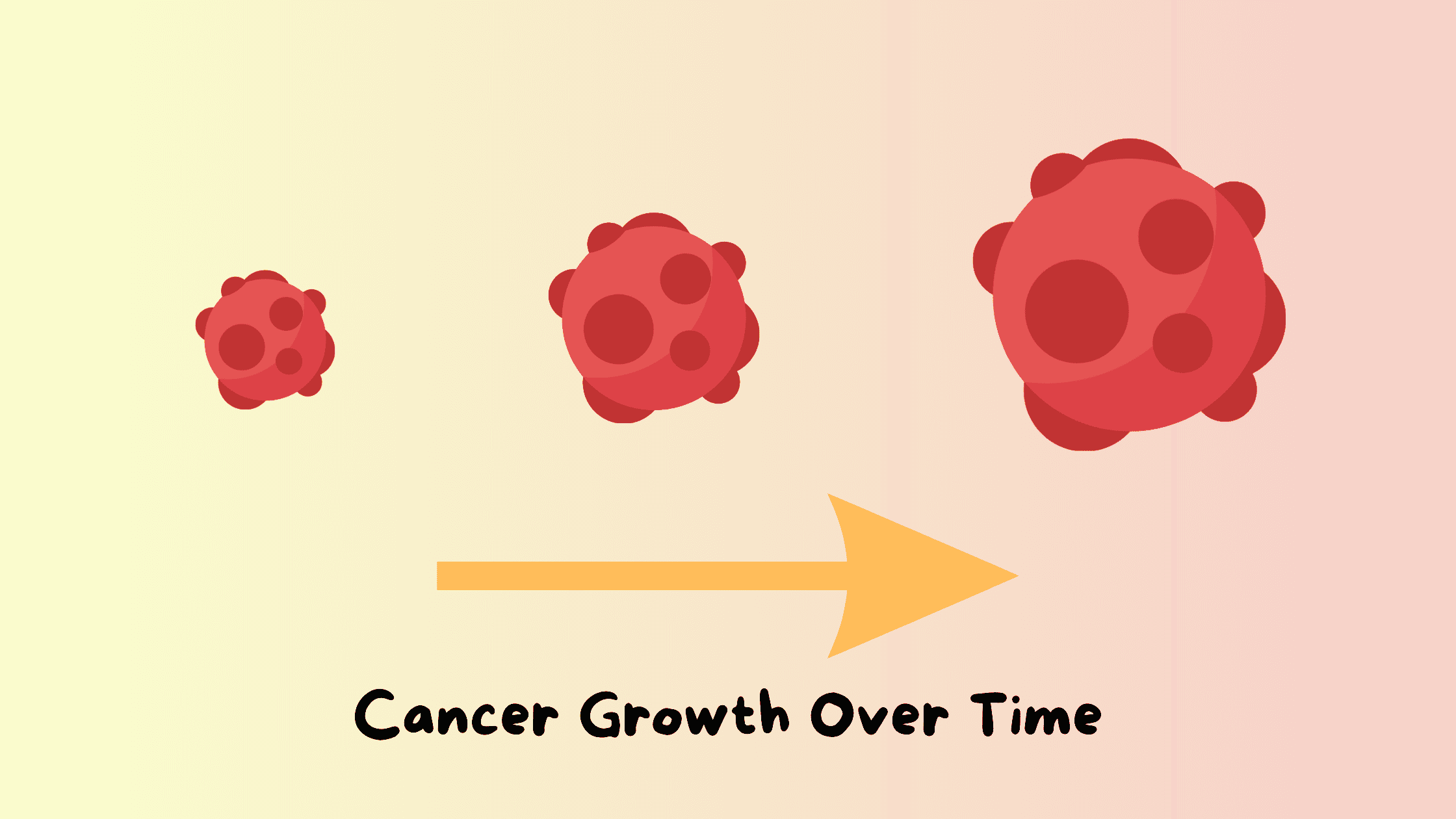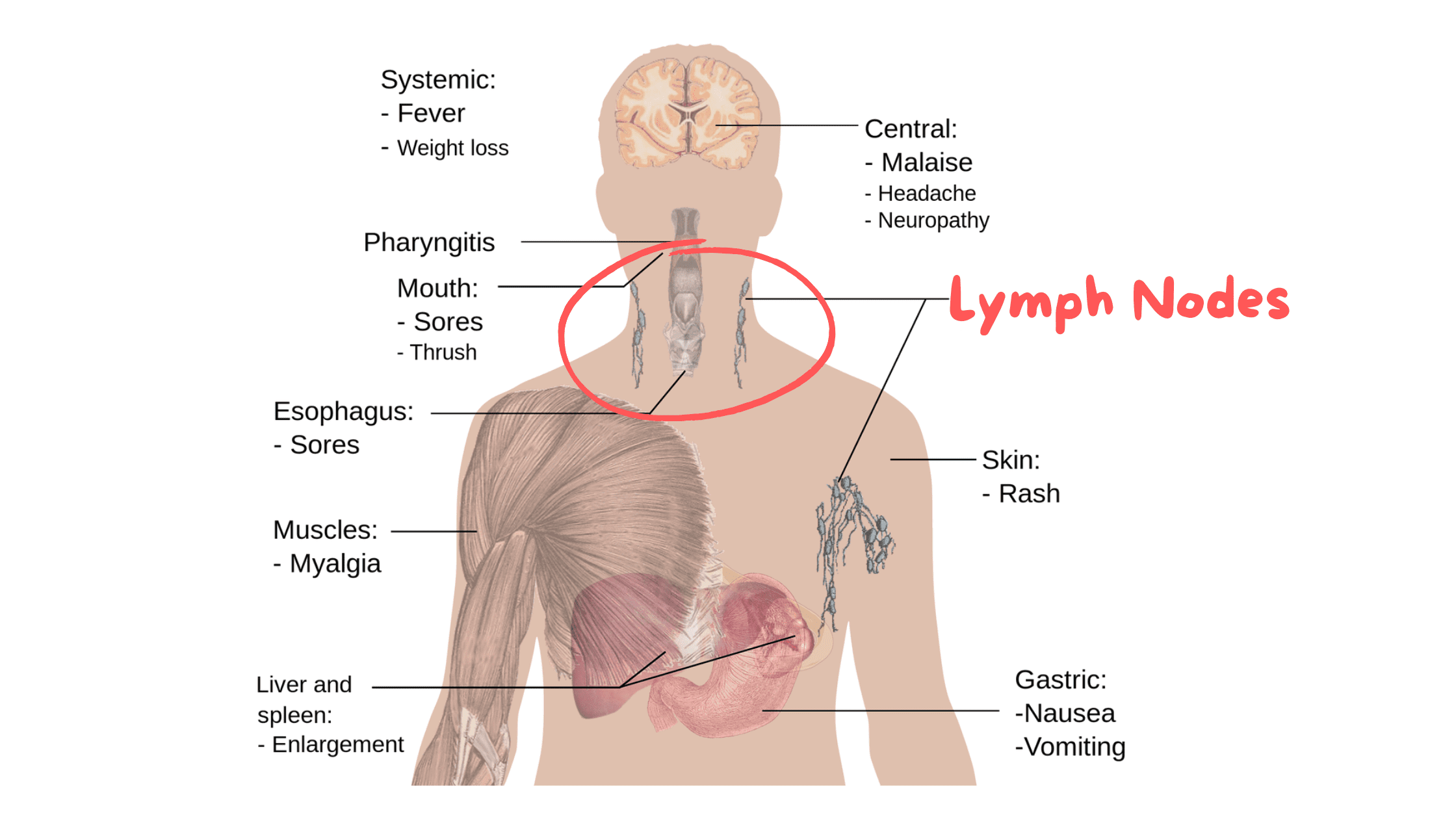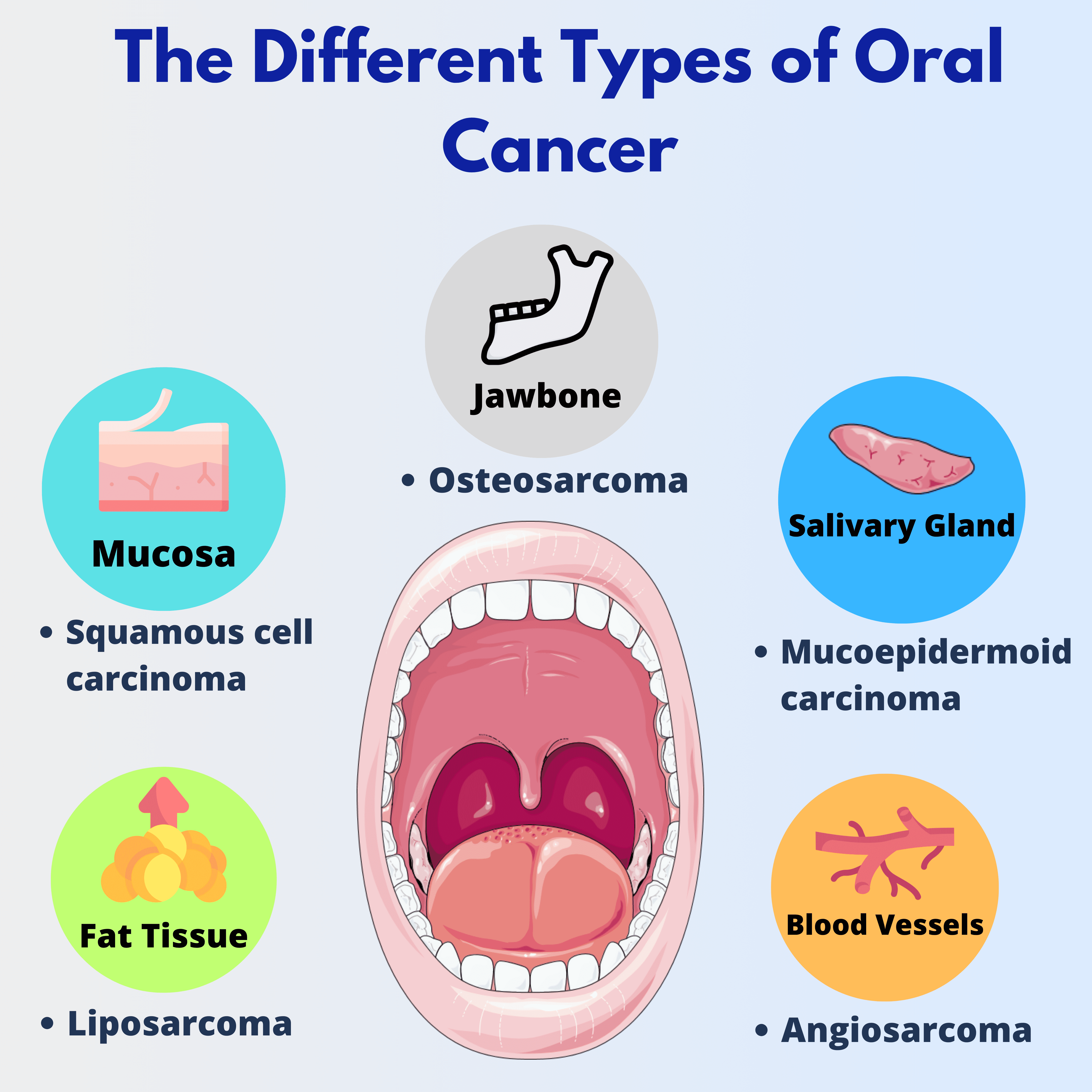Oral Cancer: All the Facts You Need to Know
Oral Cancer Facts
Oral cancer is the most common head and neck cancer.
About 11.5 out of 100,000 adults will get oral cancer (2).
The most common type is called squamous cell carcinoma.
The main risk factors are heavy smoking and drinking (6).
If you smoke and drink a lot, you're 35 times more likely to get oral cancer than if you don't do both (6).
In this article:
1. What is Oral Cancer
2. How Does Oral Cancer Occur
3. How Does Oral Cancer Progress
4. The Different Types of Oral Cancer
5. The Areas of the Mouth Most Likely to Develop Cancer
6. Risk Factors for Oral Cancer
7. The Warning Symptoms
8. Oral Cancer Treatment
9. How to Inspect Your Mouth at Home
What is Oral Cancer
Mouth cancer is the most common type of cancer in the head and neck region. About 11.5 adults out of every 100,000 will develop oral cancer. And, as with most types of cancer, the risk increases with age.Older studies showed that men were more likely to get oral cancer (about 6 men for every 1 woman). But that's changing because more women now smoke and drink alcohol, which are major risk factors.

What exactly is oral cancer? Well, like any cancer, it starts when our cells start growing and multiplying abnormally due to changes in their genes.
These genes regulate how our cells grow and function. When something goes wrong, cells can start growing uncontrollably, forming a noticeable lump or tumor.
There are different types of oral cancer, and they’re named after the tissue where they begin. In about 9 out of 10 cases, it’s a squamous cell carcinoma. This type starts when the squamous cells (the flat cells lining the inside of the mouth) begin to grow abnormally.
But sometimes, oral cancer can also start in other tissues, like the salivary glands, fat, nerves, or blood vessels.
When caught early, the chances of a full recovery can be as high as 90%. Unfortunately, most cases are diagnosed too late.
How Does Oral Cancer Occur
The development of oral cancer is too complex and not fully understood, but we do know that it's an interaction between certain environmental factors and genetics (3-7).
Factors like tobacco, alcohol, and certain viral infections can damage our DNA and kickstart the process of cancer development.
To grasp this, we need to know about two types of genes that regulate cell growth systems: Proto-oncogenes and Tumor Suppressor Genes.
Proto-oncogenes are like boosters, stimulating cells to divide and multiply. Tumor suppressor genes, on the other hand, act like brakes, slowing down cell growth.
When a mutation occurs in a proto-oncogene, it turns into a hyperactive version called an oncogene. It causes normal healthy cells to grow wildly and uncontrollably.
But our bodies have a built-in DNA repair system, and that’s where tumor suppressor genes come in. These genes help fix DNA damage and keep cells from growing too quickly. However, if these genes stop working properly, they can’t do their job—so damaged cells start to grow uncontrollably, which can lead to cancer.
How Does Oral Cancer Progress
At first, the cancer is limited to the area where it started.But as it grows, it can invade nearby tissues and spread to lymph nodes under the jaw or in the neck.
In later stages, it may travel to other organs—like the lungs or liver—a stage known as metastasis.
There is a system called TNM that simplifies cancer staging. Here is how it works:
- T: This tells us the size of the tumor. T1 means it's small, about 2 centimeters or less. T3 suggests it's larger, over 4 centimeters, and T4 means it's no longer limited to the tissue where it started.
- N: This indicates whether the cancer has spread to the lymph nodes. Normally, these nodes are small and can’t be felt. They help filter out harmful substances from the body. But when they are invaded by cancer cells, they can enlarge and become palpable.
- M: This refers to metastasis, which means cancer has spread to distant organs.

Once cancer reaches the lymph nodes, it can more easily spread to vital organs through the bloodstream. When oral cancer spreads to distant organs, the 5-year survival rate can be as low as 40%.
The Different Types of Oral Cancer
Again, oral cancer is most often squamous cell carcinoma, making up more than 90% of cases. But there are also less common types that start in other tissues:
- Malignant Melanoma: This cancer arises from melanocytes, the cells responsible for skin and mouth pigmentation. In the mouth, it results in the rapid growth of dark brown or black patches, often leading to painful, large masses.
- Osteosarcoma: As the name suggests, this malignant tumor develops in the bone, specifically the jawbone in the mouth. It causes rapid and painful swelling, leading to severe deformities and facial distortion.
- Fibrosarcoma: This cancer originates from fibroblasts, the deepest layer of skin cells. The excessive growth of these cells results in a painful mass that rapidly invades surrounding tissues.
- Liposarcoma: This is a rare tumor that stems from fat-producing cells called lipoblasts. It appears as soft lumps covered with a yellowish layer.
The Areas of the Mouth Most Likely to Develop Cancer
While cancer can affect any part of the mouth, certain areas are more prone to squamous cell carcinoma (1):
- The Tongue: Carcinoma of the tongue accounts for about 50% of all oral malignancies, with most cases involving the left or right sides.
- The Lips: Squamous cell carcinoma of the lips constitutes roughly 20% of all oral cancers, with the lower lip being the most commonly affected.
- The Floor of the Mouth (Underneath the Tongue): This is the third most common site for oral squamous cell carcinoma. Heavy alcohol and tobacco use are strongly associated with cancer in this particular region.
- Soft Palate (Back of the Roof of the Mouth): Approximately 15% of all oral carcinomas occur in this area.
- Inside the Cheeks and Gums: These are the least affected, accounting for only 1% to 6% of oral cancer cases.
Risk Factors for Oral Cancer
Several factors can increase the risk of developing oral cancer by inducing mutations in the genes we discussed earlier. Over time, these mutations can add up and turn healthy cells cancerous.These risk factors include:
- Smoking: Tobacco in all forms, whether smoked or smokeless, poses a significant risk, accounting for 90% of oral cancer cases. According to the Mouth Cancer Foundation, cigarettes contain over 70 cancer-causing chemicals.
The risk of oral cancer grows with how much and how long you use tobacco. - Alcohol: About 75% of individuals with oral cancer are alcohol consumers. People who smoke and drink together are 35 times more at risk than those who do neither (6).
This is due to the synergic effect of these two substances. Alcohol weakens the mouth's protective lining, making it more susceptible to other carcinogens. Additionally, alcohol is broken down in the mouth into acetaldehyde, a toxic chemical known to cause squamous cell carcinoma. - Viral Infection: Certain types of human papillomavirus (HPV), especially HPV-16 and HPV-18, are believed to contribute to oral cancer.
- Chronic Irritation or Trauma: Repeated minor trauma or injury can induce abnormal changes in the cells lining the mouth.
- Certain Oral Conditions: Conditions like leukoplakia, lichen planus, and erythroplakia are known to carry precancerous potential. While they initially appear as benign lesions, without treatment and in the presence of risk factors, they can become malignant.
The Warning Symptoms
Recognizing the early signs of oral cancer is vital for timely treatment.In its early stages, cancer can be sneaky and often has no obvious symptoms. It may start as minor issues like mild inflammation that’s easy to miss. That’s why it’s always a good idea to see your dentist or doctor as soon as you notice any unusual or small changes in your mouth.
Here are some common signs to watch for:
- Ulcers That Won't Heal: While most mouth ulcers, such as canker Sores, typically heal within a week or two, persistent ulcers may be a sign of oral cancer.
Another similar and common ulcerative condition is called Traumatic Ulcer. It’s caused by an injury to the mouth — whether from a hard toothbrush, a hot drink, or a harsh product. These injuries should heal once the source of trauma is removed. However, if the sore doesn’t heal and you notice warning signs like bleeding, tingling, or steady growth, seek medical help as soon as possible. - Red or White Patches: These patches may indicate precancerous conditions, although they can also result from nutritional deficiencies, anemia, or other benign conditions like geographic tongue (red patches resembling a map on the tongue).
- Abnormal Growths: Most oral lumps are benign, but it's a good idea to consult a healthcare professional if you notice an abnormal growth. Common benign mouth tumors, like Fibromas and Mucoceles, are usually small, painless, and slow-growing, not invading surrounding tissues.
- Persistent Lumps in the Neck or Under the Lower Jaw: Swollen lymph nodes in the neck can indicate inflammation, infection, or potentially invading cancer. If your lymph node doesn’t go back to normal or keeps growing, see a doctor as soon as you can.
- Other Symptoms: If you have unexplained bleeding, numbness, or pain in your mouth that persists for more than 15 days with no clear cause, you should see your dentist. Although these symptoms rarely indicate cancer, it’s still best to get them checked and rule out any serious problems.
Oral Cancer Treatment
Treatment for oral cancer primarily involves three options: surgery, radiotherapy, and chemotherapy. The choice depends on the type of cancer and its extent.In early-stage cancer, surgery alone may be sufficient. In advanced cases, surgery is often complemented by radiotherapy and chemotherapy to target cancer cells that have spread beyond the primary site.
The potential for a complete cure and survival rates depend mainly on the cancer stage.
According to the American Society of Clinical Oncology (ASCO), the 5-year survival rate is 86% when oral cancer is diagnosed early. But if the lymph nodes are involved, the rate drops to 69%. When the cancer spreads to other parts of the body (metastasis), survival chances fall to below 40%.
How to Inspect Your Mouth at Home
To be on the safe side, make it a routine to regularly inspect your mouth for any unusual signs or changes. Check all areas inside your mouth, including the roof and floor, tongue, inner cheeks, and gums.To see the hard-to-reach spots in your mouth, you can use your fingers or a spoon to move your tongue, lips, and cheeks aside. This helps you check both sides of your tongue, which are common places for oral cancer to develop.
If any sore persists for more than 15 days, even after removing all sources of injury, it should be investigated by your dentist or doctor. The same goes for white or red spots, unusual bleeding, and persistent pain.
If the sore or growth looks highly suspicious, it should be biopsied to determine its exact nature. That's because it’s difficult—if not impossible—to make a diagnosis based on appearance alone.
Even if the spot or sore doesn't look serious, it's essential to rule out cancer, as a late diagnosis can lead to more invasive treatment with a lower chance of success.
- Essential Of Oral Pathology - Book by Swapan Kumar Purkait
- Oral Cancer Incidence (New Cases) by Age, Race, and Gender | National Institute of Dental and Craniofacial Research (nih.gov)
- Molecular pathogenesis of oral squamous carcinoma - PMC (nih.gov)
- Oral and Oropharyngeal Cancer: Statistics | Cancer.Net
- Cancer in Lymph Nodes May Help Tumors Metastasize - NCI
- fdi-oral_cancer-prevention_and_patient_management-fr.pdf (fdiworlddental.org)
- Smoking and Drugs | Mouth Cancer Foundation